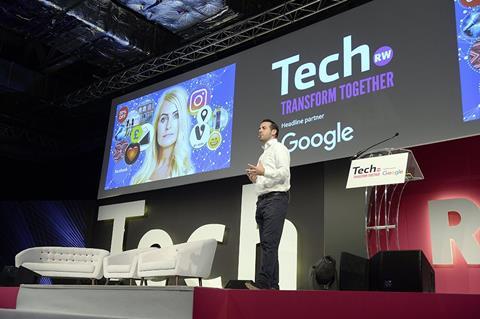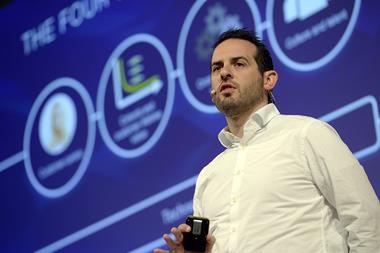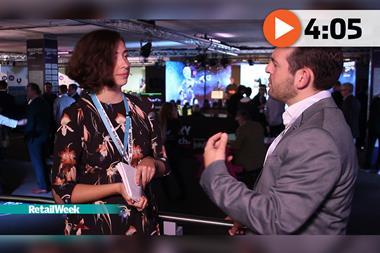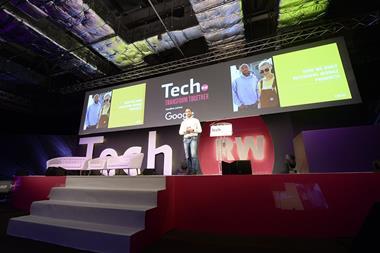As the second and final day of Tech. powered by Retail Week draws to a close, we look at the key themes and tangible takeaways that surfaced.

Online-to-offline is a two-way street
Digital transformation tends to be discussed as a one-way move of store-based retailers embracing online.
But Shop Direct retail and technology boss Jon Rudoe says online-to-offline (O2O) is a two-way street.
Pureplays will increasingly need the scale of bricks and mortar, while stores will need to harness the technology on which pureplays have built their businesses.
Nowhere is this more visible than in the transformations of two of the world’s biggest players: Amazon and Walmart.
While online giant Amazon has sought to scale its grocery business by acquiring Whole Foods Market, competitor Walmart has snapped up ecommerce businesses such as Jet.com, Moosejaw and Modcloth, to leverage their category expertise and reach with millennials.
At the second day of the conference, businesses highlighted how they leverage O2O on a smaller, but much more granular scale.
Clothing retailer Zalando visits customers’ homes to interview them face-to-face instead of relying purely on data analytics, according to Marc Lamik, its head of innovation and partnerships.
And Coca-Cola’s head of European sales David Martin said it was exploring ways of connecting vending machines to shoppers’ phones through beacon technology as it seeks to connect the brand and the shopper, wherever they are.
The power of personality-driven content
You have around eight seconds to grab the attention of the average Gen Z shopper, says Jeff Nathenson, the managing director of sports entertainment network Whistle Sports.
This is a serious problem for many traditional retailers, but according to Nathenson, ”organic discoverability” - appearing on target customers’ social feeds and search - is the solution.
“Have you ever heard of F2Freestylers or Dude Perfect? If not, you’re probably over the age of 25. These guys can walk through a room of over-25s and no one will recognise them, but if they walk through a room of under-25s they can’t reach the door,” he says.
Social influencers such as F2Freestylers or Dude Perfect are massive celebrities in their own right, often operating under a cloak of anonymity to the over 25s.
Adidas recently signed F2Freestylers – two lads from North London – to wear its merchandise on social media, in the same way they would sign a footballer like Ronaldo. The reason being they have a one-to-one relationship with five million kids worldwide, and therefore move merchandise as effecitively as a professional sports person.
Dude Perfect come from similarly modest roots: five friends from Texas posting basketball trick shots on YouTube. Now, however, they promote products for Nerf, most recently sharing a video that amassed over ten million views in a single day.
Whistle Sports connects marketers to the Gen Z consumer group via the social influencers on its books. However, Nathenson warns that working with influencers can be challenging.
“These people tend to be incredibly passionate about their given trade, and have operated on their own for large periods of time, often in a basement with no natural light source,” he says.
But their strength is their personality. The content is authentic, and therefore retailers do not need to write large cheques for paid advertising.
The key is to identify social influencers in your sector, Nathenson explains. Relationships often begin with retailers shipping merchandise to these influencers, and fostering a partnership organically.
Do it because the customer wants it
It was said yesterday, and reiterated today that retailers should not throw money at technology for the sake of it. It’s about implementing and developing technology to directly solve your customers’ needs or problems.
Furniture retailer Ikea credits its success to following that principle. It set out, over 70 years ago, to sell functional and affordable products that would improve the living standards of the Swedish people.
As its customers’ needs have evolved, so too have the solutions Ikea strives to provide, as demonstrated by its pilot of order-and-collection points in the UK and augmented reality tools to help shoppers try before they buy.
New technologies should not distract retailers from their core vision, but enable them to solve the complex problems consumers face today.
“Don’t define your business by what you currently do, but define it by what your customers are looking to solve,” said Shop Direct’s Rudoe, rationalising the changes and advancements the company has made, such as axing its catalogue, over the last few years.
The online department store retailer has scoured its data to define what problems its customers want solving and has implemented technologies and advancements accordingly.
Tech bytes
- “The exciting prospect of a world where artificial intelligence dominates, is that it will be a world where we inter-operate. Everyone will need to work together: retailers, tech companies, you name it.”
Microsoft general manager of worldwide retail and consumer goods Tracy Issel
- “Customers don’t learn about retailers from their website. They learn from Siri, Alexa, Google Knowledge Cards, etc. Retailers need to capture facts about themselves to become more searchable. Descriptions such as wheelchair friendly, gluten free and images all aid how searchable you are.”
Yext managing director Jon Buss
- On AI: Four things to start doing now: 1) un-f*ck your data – the quality of it and having it in one place is critical; 2) create your AI story – lead your organisation by creating a vision that compels everyone; 3) start investing today – it’s not a side project, it’s expensive and needs investment, 4) Be patient – it takes time to get right.”
Skyscanner chief technology officer Bryan Dove
- “If you’re not Steve Jobs, building a product by just thinking about it is usually not successful. Speak to your customers – those you are targeting as well the ones you already have – at all stages of the product development to ensure it’s something they are actually interested in.”
- “Data is your biggest enemy…and you’re biggest friend. It will destroy most of your product ideas, and that’s a good thing.”
Zalando head of product for innovation and partnership Marc Lamik’s rules of product innovation


























2 Readers' comments